
Optical Materials
Optical Window Glass Substrate Wafer Quartz Plate JGS1 JGS2 JGS3
Item Number : KTOM-OQP
Price varies based on specs and customizations
- Density
- 2.2×103 kg/m2
- Diameter
- 5mm-1500mm
- Thickness
- 0.8mm-100mm
Shipping:
Contact us to get shipping details Enjoy On-time Dispatch Guarantee.
Why Choose Us
Easy ordering process, quality products, and dedicated support for your business success.
Introduction
Optical Quartz Plate, an essential component in various industries, is renowned for its high quality and refined nature. Derived from abundant quartz material, these plates are particularly suitable for the production of semiconductors, boats, wafers, pedestals, and wafer carriers. Their exceptional thermal resistance makes them ideal for high-temperature applications, ensuring optimal performance in demanding environments.
Detail & Parts



Applications
The Optical Quartz Plate series finds applications in the following areas:
- Single wafer processing equipment (shower plates, windows, gas distribution plates, wafer carriers, and susceptors)
- Wet cleaning process for tank manufacturing
- FPD (Flat Panel Display) manufacturing
- Lamp covers
- Gas flow regulation
- Gas distribution
- Analytical filtration
- Liquid filtration
- Watches polishing
- Optical applications (eye glasses, self-cleaning tinted windows)
- Photovoltaic applications (solar energy)
- Device applications (computer chips, displays, communications)
- Functional or decorative finishes (hard protective films, gold, platinum, chrome plating)
- Lenses and optical devices
- Lighting devices (filament and arc lamps)
- Sight glasses
- Level gauges
- X-ray tubes
- Vacuum tubes
- CVD (chemical vapor deposition) and diffusion procedures
- End caps
- Transfer carriers
- Thermocouple tubes
- Boats
Features
The Optical Quartz Plate series offers a range of advantages that benefit customers in various industries:
- Exceptional Thermal Resistance: Withstands high temperatures, making it ideal for demanding applications.
- High-Quality Materials: Derived from abundant quartz material, ensuring purity and durability.
- Versatile Applications: Suitable for manufacturing boats, wafers, pedestals, and wafer carriers.
- Superior Ultraviolet Transmission: Ideal for lenses and optical devices, enhancing image quality.
- Reduced Devitrification: Extends the lifespan of lamps operating at elevated temperatures.
- Diverse Applications: Supports sight glasses, level gauges, X-ray tubes, and more.
- Distinct Properties: High silicone dioxide content and symmetrical structure differentiate it from glass, providing superior performance.
Principle
Optical Quartz Plate is a kind of optical element made of high-purity silica glass. It has the characteristics of high light transmittance, low thermal expansion coefficient, good thermal stability, and high laser damage threshold. It is mainly used in laser systems, optical instruments, and other fields. The working principle of the optical quartz plate is based on the birefringence of quartz crystal. When linearly polarized light passes through the quartz plate, it will be decomposed into two orthogonally polarized light waves, which will produce a phase difference due to the different refractive indices of the quartz crystal for different polarization directions. The phase difference is proportional to the thickness of the quartz plate and the wavelength of the incident light. By adjusting the thickness of the quartz plate, the phase difference between the two orthogonally polarized light waves can be controlled, thereby achieving the purpose of polarization conversion or polarization modulation.
Advantages
- High thermal resistance: Optical Quartz Plates are made from quartz glass, which has a very high thermal resistance. This makes them ideal for use in high-temperature applications, such as in semiconductor manufacturing and other industrial processes.
- Excellent optical properties: Optical Quartz Plates have excellent optical properties, including high transmission and low reflection. This makes them ideal for use in optical applications, such as in lasers, telescopes, and other optical instruments.
- Chemical inertness: Optical Quartz Plates are chemically inert, which means that they are not affected by most chemicals. This makes them ideal for use in harsh environments, such as in chemical processing and other industrial applications.
- Long lifespan: Optical Quartz Plates have a long lifespan, which makes them a cost-effective choice for use in demanding applications
Thermal Properties of Optical Quartz Plate
| Coefficient of Expansion | 5.54 × 10-7 (K-1) |
| Thermal conductivity(20ºC) | 1.4W/mºC |
| Specific heat(20ºC) | 660J/kgºC |
| Softening point | 1730ºC |
| Annealing point | 1250ºC |
Provide customized services
Through the implementation of innovative and state-of-the-art melting processes, we have acquired extensive expertise in the development and manufacture of quality glass products, offering a wide range of optical glass products for a variety of commercial, industrial and scientific applications. The company provides various specifications of optical glass such as raw glass, cut parts and finished components, and cooperates closely with customers to customize products according to customer needs. With an unwavering commitment to quality, we ensure our customers receive the perfect solution tailored to their requirements.
For further quotations, please contact us.
FAQ
What Are Optical Quartz Plates?
What Are The Main Types Of Glass Substrates?
What Are The Main Types Of Optical Quartz Plates?
What Is Optical Glass Used For?
What Is Soda-lime Glass Used For?
What Are The Applications Of Optical Quartz Plates?
What Is The Composition Of Optical Glass?
What Are The Advantages Of Using Sapphire Substrates?
What Are The Advantages Of Using Optical Quartz Plates?
What Are The Most Common Optical Glasses?
Why Is Boroaluminosilicate Glass Suitable For Laboratory Glassware And Cooking Utensils?
How Are Optical Quartz Plates Manufactured?
What Are The Applications Of Optical Quartz Glass Sheets?
What Makes K9 Quartz Sheets Unique?
What Makes K9 Glass Special?
What Is The Role Of Optical Quartz Plates In Telecommunications?
What Is A CaF2 Window Used For?
How Do Optical Quartz Plates Contribute To Laboratory Research?
What Are The Properties Of Magnesium Fluoride Crystal Substrates?
What Is Silicon Used For In The Near-infrared Range?
What Are Glass Vibration Beads Used For In Laboratories?
4.8 / 5
The Optical quartz plate JGS1 is a perfect match for our semiconductor production needs. The supreme quality of the product ensures consistent results, and the prompt delivery ensures minimal disruptions to our production schedule.
4.7 / 5
The Optical quartz plate JGS2 is an outstanding product. Its exceptional thermal resistance enables us to operate at high temperatures without compromising the product's integrity. We highly commend its durability.
4.9 / 5
The Optical quartz plate JGS3 has been a game-changer for our laboratory. Its exceptional optical clarity enhances the accuracy of our experiments, and its resistance to chemicals ensures longevity. We highly recommend this product.
4.6 / 5
The Optical quartz plate JGS1 has exceeded our expectations. Its precise dimensions and superior quality have significantly improved the efficiency of our production processes. We appreciate the reliable and timely service provided by KINTEK SOLUTION.
4.8 / 5
The Optical quartz plate JGS2 is a remarkable product. Its durability and resistance to extreme conditions have made it an indispensable tool in our laboratory. We highly commend the exceptional quality and craftsmanship of this product.
4.7 / 5
The Optical quartz plate JGS3 has been a valuable addition to our research facility. Its high purity and excellent electrical insulation properties have enabled us to conduct experiments with greater precision and accuracy. We are thoroughly impressed with this product.
4.9 / 5
The Optical quartz plate JGS1 has revolutionized our semiconductor manufacturing process. Its exceptional resistance to thermal shocks and chemicals has minimized downtime and increased productivity. We applaud the innovation and quality of this product.
4.6 / 5
The Optical quartz plate JGS2 has been a lifesaver for our laboratory. Its superior optical clarity and low coefficient of thermal expansion have enabled us to achieve unprecedented levels of precision in our experiments. We highly recommend this exceptional product.
4.8 / 5
The Optical quartz plate JGS3 has proven to be an invaluable asset in our research endeavors. Its exceptional resistance to irradiation and extreme conditions has allowed us to push the boundaries of our experiments. We are truly grateful for the remarkable quality of this product.
4.7 / 5
The Optical quartz plate JGS1 is a testament to the ingenuity and craftsmanship of KINTEK SOLUTION. Its exceptional flatness and dimensional accuracy have enabled us to achieve unparalleled results in our research. We highly commend this remarkable product.
4.9 / 5
The Optical quartz plate JGS2 has been a game-changer for our laboratory. Its superior thermal properties and resistance to high temperatures have enabled us to conduct experiments that were previously impossible. We are thoroughly impressed with this exceptional product.
4.6 / 5
The Optical quartz plate JGS3 has been a revelation for our research team. Its exceptional purity and resistance to chemicals have allowed us to conduct experiments with unmatched precision and accuracy. We highly recommend this remarkable product.
4.8 / 5
The Optical quartz plate JGS1 is a shining example of innovation and quality. Its exceptional optical clarity and low coefficient of thermal expansion have enabled us to achieve groundbreaking results in our research. We are thoroughly impressed with this remarkable product.
4.7 / 5
The Optical quartz plate JGS2 has been a lifesaver for our laboratory. Its superior optical clarity and low coefficient of thermal expansion have enabled us to achieve unprecedented levels of precision in our experiments. We highly recommend this exceptional product.
4.9 / 5
The Optical quartz plate JGS3 has proven to be an invaluable asset in our research endeavors. Its exceptional resistance to irradiation and extreme conditions has allowed us to push the boundaries of our experiments. We are truly grateful for the remarkable quality of this product.
4.6 / 5
The Optical quartz plate JGS1 is a testament to the ingenuity and craftsmanship of KINTEK SOLUTION. Its exceptional flatness and dimensional accuracy have enabled us to achieve unparalleled results in our research. We highly commend this remarkable product.
4.8 / 5
The Optical quartz plate JGS2 has been a game-changer for our laboratory. Its superior thermal properties and resistance to high temperatures have enabled us to conduct experiments that were previously impossible. We are thoroughly impressed with this exceptional product.
4.7 / 5
The Optical quartz plate JGS3 has been a revelation for our research team. Its exceptional purity and resistance to chemicals have allowed us to conduct experiments with unmatched precision and accuracy. We highly recommend this remarkable product.
REQUEST A QUOTE
Our professional team will reply to you within one business day. Please feel free to contact us!
Related Products
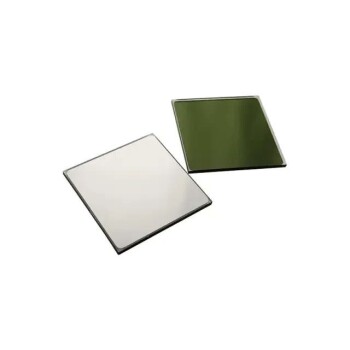
Optical Window Glass Substrate Wafer Single Double Sided Coated K9 Quartz Sheet
K9 glass, also known as K9 crystal, is a type of optical borosilicate crown glass renowned for its exceptional optical properties.
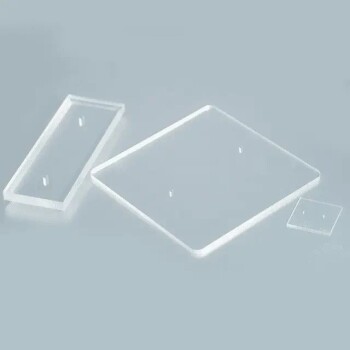
MgF2 Magnesium Fluoride Crystal Substrate Window for Optical Applications
Magnesium fluoride (MgF2) is a tetragonal crystal that exhibits anisotropy, making it imperative to treat it as a single crystal when engaging in precision imaging and signal transmission.
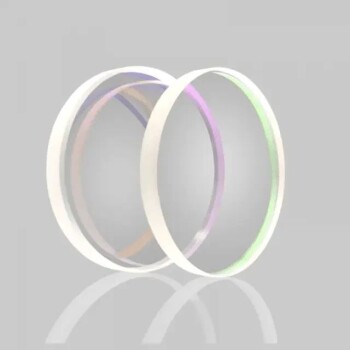
Optical Window Glass Substrate Wafer Barium Fluoride BaF2 Substrate Window
BaF2 is the fastest scintillator, sought-after for its exceptional properties. Its windows and plates are valuable for VUV and infrared spectroscopy.
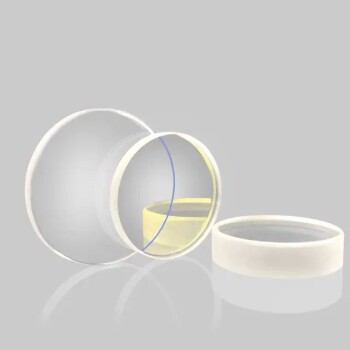
Optical Window Glass Substrate Wafer Sheets Zinc Sulfide ZnS Window
Optics Zinc Sulphide (ZnS) Windows have an excellent IR transmission range between 8-14 microns.Excellent mechanical strength and chemical inertness for harsh environments (harder than ZnSe Windows)
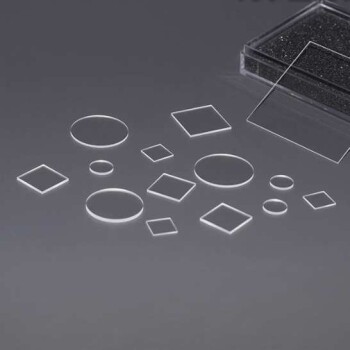
Infrared Transmission Coating Sapphire Sheet Substrate Window
Crafted from sapphire, the substrate boasts unparalleled chemical, optical, and physical properties. Its remarkable resistance to thermal shocks, high temperatures, sand erosion, and water sets it apart.
Related Articles

Optical Quartz Plate: A Comprehensive Guide to Applications, Specifications, and Usage
Discover the versatility of optical quartz plates, exploring their uses in various industries, key specifications, and factors that differentiate them from glass. Gain insights into their applications in ultraviolet transmission, precision optics, and more.

Unveiling the Exceptional Properties and Applications of Optical Quartz Plates
Discover the remarkable characteristics and diverse applications of optical quartz plates, including their superior ultraviolet transmission, thermal stability, and use in lenses, lighting devices, and semiconductor manufacturing.

Unlocking the Power of Optical Quartz Plates: Applications and Benefits
Delve into the world of optical quartz plates, exploring their exceptional properties, diverse applications in industries like optics, electronics, and more. Discover their advantages, including low thermal expansion, high temperature resistance, and precise optical clarity.

Understanding Quartz Electrolytic Cells: Applications, Mechanisms, and Advantages
Explore the detailed workings, applications, and benefits of quartz electrolytic cells in various industries. Learn how these cells facilitate precise chemical reactions and their role in high-purity metal production.

Infrared Heating Quantitative Flat Plate Mold: Design, Applications, and Benefits
Explore the advanced design and applications of infrared heating quantitative flat plate molds. Learn about their benefits in achieving uniform heat distribution and efficient processing.

Comprehensive Guide to Atmosphere Furnaces: Types, Applications, and Benefits
Explore the world of atmosphere furnaces with our detailed guide. Learn about their types, applications in metallurgy and beyond, and the benefits they offer for precise material heat treatment.

Why PECVD is Essential for Microelectronic Device Fabrication
PECVD (Plasma-Enhanced Chemical Vapor Deposition) is a popular thin film deposition technique used in microelectronics device fabrication.

How to Maintain Manual Lab Hot Press Machine
Maintenance of manual hot press: Keep flat and clean, Clean the upper and lower linings, Pad the fiberboard

Key Properties and Differences Between Fused Silica and Natural Quartz
A detailed comparison of the properties, appearance, physical, chemical, and application differences between fused silica and natural quartz.

Common Optical Materials and Their Properties
An overview of various optical materials, their properties, and applications across different spectral ranges.

Optical Components: Window Sheets and Their Applications
An overview of various types of optical window sheets, their materials, precision, and coating options.

Optical Window Sheet Selection Guide
A comprehensive guide on selecting optical window sheets based on substrate material, optical and mechanical precision, and coating options.